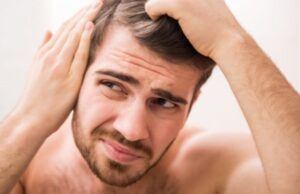SOURCE: http://www.bioline.org.br/request?md05001
African Journal of Biomedical Research, Vol. 8, No. 1, 2005, pp.1 – 14
1HAWKINS, D. AND 1ABRAHAMSE, H.
1Faculty of Health, University of Johannesburg, P.O. Box 17011, Doornfontein, Johannesburg, South Africa, 2028.
Abstract
The basic tenet of laser therapy is that laser radiation has a wavelength dependent capability to alter cellular behaviour in the absence of significant heating. Low intensity radiation can inhibit as well as stimulate cellular activity. Laser therapy typically involves the delivery of 1-4J/cm2 to treatments sites with lasers having output powers between 10mW and 90mW. There are two major areas of laser therapy research: the laboratory and the clinic. The laboratory presents the least ambiguous results. Here, although unsupported results do appear, the vast majority of published work finds clear evidence that laser irradiation alters cellular processes in a nonthermal, wavelength-dependent manner. Low energy laser irradiation alters the cellular function by effecting protein synthesis, cell growth and differentiation, cell motility, membrane potential and binding affinities, neurotransmitter release, ATP synthesis and prostaglandin synthesis. Laboratory findings provide scientific rationale of laser therapy and the effect of laser therapy on cellular processes. This review outlines some of the current methods employed in the laboratory to measure the effect of low level laser therapy (LLLT) on cellular and molecular processes in the cell. This review briefly explains the different structural, cellular and molecular parameters and highlights some of the basic principles and protocols including specialized equipment requirements.
Keywords: low level laser therapy, wound healing, laboratory, cellular, molecular
INTRODUCTION
The effects that optical radiation may have on tissue can be separated into categories depending on the portion of the spectrum (wavelength) that is incident on the tissue and the intensity (power density or irradiance) of the radiation. Wavelength is expressed in nanometers and irradiance is power delivered divided by area exposed (Basford, 1995).
Lasers used in laser therapy have output powers between 10 and 90mW with associated temperature elevations <0.5 – 0.75°C. The temperature changes are hardly noticeable and are far too low and localized to produce significant physiological effects. Low level laser treatment parameters include wavelengths of 632.8nm, 820nm, 830nm or 904nm with treatments ranging between 1-4 J/cm2 for up to 30s on a daily or alternate day schedule. Laboratory research suggests that radiant exposures <0.01 J/cm2 can alter cellular processes. The reports by Mester et al.,(1971) stated that 1-4 J/cm2 of laser irradiation induced healing of chronic nonhealing soft tissue ulcers and formed the start of clinical laser therapy (Mester et al, 1971). Laboratory work has provided some evidence and support for the use of LLLT in wound healing. Many investigators, although not uncontested, found that visible and IR radiation stimulates capillary growth and granulation tissue formation and alters cytokine production. Other studies have shown altered keratinocyte motility and fibroblast movement following irradiation. Additional studies have found that laser irradiation may enhance, inhibit or have no effect on the function of cells. Improvements, particularly in the initial phase of wound healing, have been reported following laser irradiation in many rabbit and rodent experiments. The application of such findings to humans is still unclear since similar experiments with pigs, which have skin more similar to that of humans, have shown no benefit (Mester et al, 1971).
One conclusion is that laboratory studies support the concept that laser irradiation can modify cellular processes in a wavelength-dependent nonthermal manner. Another is that intensities sufficient to produce these effects on cells can be delivered to superficial joints and tissues typically treated with laser therapy (Gitomer and Jones, 1990).
The mechanisms of the positive influence of LLLT are not completely understood. There are various local and systemic medico-biological processes that take place under the influence of LLLT. The action of laser light of optimal parameters has normalizing influence bringing to the total rising of adaptive potential and to the acceleration of treatment. Initial phase of any biological and clinical effect of LLLT is the absorption of quantum energy by biotissues with induction of primary photophysical and photochemical processes. The process of absorption is influenced by the optical properties of the biological object and the parameters of laser irradiation (Gasparyan, 2000).
There exists a strong relationship, first, between light parameters and biostimulation effects on a cellular level, and second, between the moment of irradiation and limits of magnitude of biostimulation effects. Systemic studies with cells clearly indicate that such parameters of light as wavelength, fluence, and intensity play the most important roles in both stimulation and inhibition of cellular metabolism (Karu, 1991).
In healing tissues the following sequence of events must take place. There must be an injury in the first place and then a haematoma is formed. Platelets are the first cell components to invade the wound site and initiate the wound healing process by releasing growth factors. Several chemicals are released by platelets and monocytes to attract fibroblasts to the haematoma. Inflammation occurs through the action of neutrophils, macrophages, and lymphocytes mediated by growth factors and proteases. Proliferation takes place through the action of fibroblasts and once they arrive at the site of injury, they begin to proliferate and synthesize collagen. Proliferation of fibroblasts, epithelial and endothelial cells is largely dependent on growth factors and collagen deposition. Remodelling is facilitated by collagen cross linking and collagen degradation increasing scar strength as maturation of scar formation occurs (Dyson, 1991).
Wound healing involves the following phases:
- Haemostasis: platelets, endothelial cells, fibrin and fibronectin act through growth factors and cytokines.
- Inflammation: the point when blood clots form, bacteria are attacked and there is an orderly recruitment of key cells into the wound site.
- Proliferation: when cells necessary for wound closure multiply at the wound site to make new tissue and blood vessels.
- Remodelling: when the wound is healed and the initial scar tissue is restructured.
Any device that can accelerate any of these processes (transition from haematoma to fibroplasias, the development of new blood vessels, the production of collagen, or even the remodelling process) could accelerate the healing process of wounds (Dyson, 1991). Literature indicates that laser photobioactivation accelerates inflammation, modulates the level of prostaglandin, enhances the action of macrophages, promotes fibroblast proliferation, facilitates collagen synthesis, fosters immunity and even accelerates the healing process. However, the following research questions should be considered: (1) does photobioactivation modulate healing (2) if so, what really happens to the tissue and (3) what are the ultrastructural, cellular or molecular changes induced by photobioactivation in tissue or cells (Dyson, 1991).
Growth factors are classified as cytokines, which are proteins that act as intracellular signals to allow cells to communicate with one another. Growth factors are actually a subclass of cytokines (non-antibody proteins released from some cells and act as mediators) that specifically stimulate the migration and proliferation of cells and synthesis of new tissues. The mechanism of action of growth factors relies on the interaction of the growth factor with the cell membrane. Growth factors are either autocrine (acting on the cell that produced them), juxtocrine (acting on an adjacent cell), paracrine (acting on the local environment), or endocrine (acting on a distant cell). Growth factors are involved in all phases of wound healing (Table 1) and also have the ability to regulate many other functions within the cell, including protein synthesis. Growth factors are essential to wound healing (Ortho-McNell Pharmaceutical, 2002). Growth factors attract useful cells and proteins to the wound, including immune cells to fight infection and other cells to form connective tissue. They stimulate and increase production of connective tissue, create a new supply of blood vessels to nourish the site and promote remodelling (Ortho-McNell Pharmaceutical, 2002).
Platelet derived growth factor is one of the earliest of several growth factors identified in the wound healing process. The growth factor is a product of platelets and other cell types as well, including macrophages and endothelial cells. The function of PDGF is most evident at the proliferation stage in open wounds where granulation begins. Upon release at the wound site, it stimulates migration and proliferation of cells important to the wound healing process (Dyson, 1991).
Regulation of wound healing is by growth factors and cytokines that affect cell migration, proliferation and protein production. Cells enter the wound site by migration, which involves recognition of cell surface integrins and adhesion ligands on matrix proteins.
LLLT, when used in an appropriate manner, can stimulate the healing of injured tissues such as those of the dermis. Investigations into the mechanisms involved have shown that many of the types of cells whose interaction results in dermal repair can be affected in a therapeutically advantageous manner by treatment with LLLT both in vitro and in vivo. Mast cells and macrophages can be stimulated to release growth factors and other substances, while the proliferation of fibroblasts, endothelial cells and keratinocytes maintained in adverse conditions can also be stimulated (Dyson, 1991). The development of granulation tissue is mainly controlled by growth factors released from macrophages. Light of a number of different wavelengths, specifically 660, 820, 870nm, at an energy density of 2.4J/cm2, has been shown to stimulate the ability of macrophages in vitro to release growth factors, which stimulate fibroblast proliferation; in contrast, light of 880nm wavelength was inhibitory (Smith, 1991). At 660nm the stimulatory effect of LLLT is dose dependent for exposure to energy densities of 2.4 – 7.2J/cm2, the upper end of the range being most effective and with 9.6J/cm2 proving to be less effective than 7.2J/cm2.
One of the problems with some of the earlier studies by Mester et al., (1971) and a number of other studies performed in the earlier seventies is that there appear to be technical discrepancies and a lack of evaluative research tools (Enwemeka, 1991). For example, the use of photographic measurements to evaluate wound healing may be questioned on the grounds that such measurements do not provide any information about the actual depth of the wound. Since a deep wound with a small area may indeed be less healed than a larger shallow wound, photographic measurement techniques can yield misleading information. Another example states that mankind has achieved the ability to measure time in such small units as the nanosecond, the science of counting the number of days it takes a wound to heal completely can be questioned, just as the use of visual observation to ascertain healing can be judiciously queried. These methodological problems form doubts in the minds of many laser enthusiasts and researchers. It is for this reason that laboratory evaluation of wound healing using biochemical markers has become so necessary (Enwemeka, 1991).
1. Evaluation of structural and functional changes
Chemotaxis, defined as directed cell motion toward an extracellular gradient, plays an important role during fertilization, inflammation, wound healing and haematopoesis. The number of viable cells that have migrated through a special “chemotaxis” chamber usually determines the amount of chemotaxis (Rigau et al., 1995).
Experimental studies on animals and in vitro conditions provide evidence that 633nm laser light can enhance wound healing. Rigau et al., (1995) studied the effects of the 633nm laser on the behaviour and morphology of a primary fibroblast culture after a central scratch of 0.4-1mm and two irradiations were performed10. The effect of the wounding and laser irradiation was studied using colony formation (formation of colonies in the central zone of the wound or on the edge of the scratch), haptotaxis (change of orientation of the edge cells) and chemotaxis-chemokinesis (movement or migration of cells across the wound). The number and intensity of colony formation, the haptotaxis of the edge fibroblasts and the fibroblasts present in the centre of the scratch were rated and the irradiated and non-irradiated controls compared. The group concluded that structural changes like colony formation, haptotaxis and chemotaxis-chemokinesis appear sooner in LLLT irradiated cultures than in non-treated controls. They also confirmed that LLLT induced fibroblast biological effects10.
Our laboratory findings using wounded human skin fibroblasts (WS1) supported the findings of Rigauet al., (1995) and the fibroblasts displayed evidence of chemotaxis, colony formation and haptotaxis (Figure 1) which appeared sooner in cultures that were irradiated and incubated overnight at 37°C.
Veselska and Janisch (2000) studied the effect of long wavelength ultraviolet (UV) radiation on the survival of L929 mouse fibroblasts and on the integrity of the two main cytoskeletal structures (microtubules and microfilaments). All cells were irradiated with an equal dose of UVA at 356nm, subsequently re-incubated and collected at regular intervals for further processing. Cytoskeleton morphology observations, mitotic index assessment and cell viability tests were performed by fluorescence microscopy. The proliferating activity of cells after irradiation was measured by spectrophotometry using the neutral red assay. After short reparation periods (30 minutes to 3 hours) there was an increase in the number of apoptotic cells with typical features (plasma membrane blebbing and DNA fragmentation). The surviving cells were characterized by other changes in morphology (shrinking of normal cells or formation of giant multinuclear cells).
Flow cytometry can be used to detect morphological changes of cells. During apoptosis cells shrink and undergo an increase in granularity. This can be detected in the flow cytometer by the change in the light scatter properties of the cells. Cells are analysed by forward scatter (size) and side scatter (granularity). Healthy cells appear as large particles with a few smaller cells (apoptotic bodies) to the left of the main population. When cells undergo apoptosis there is an accumulation of small apoptotic bodies.
2. Evaluation of cell viability and cytotoxicity
One of the most common methods for measuring cell number or proliferation is the assessment of TdR incorporation using 3H or BrdU. Other, colorimetric assays can be used to assess cell number, for example, the MTT colorimetric assay has been demonstrated to be extremely useful. Kato et al.,(1999) used the MTT colorimetric assay and the trypan blue exclusion assay to assess cell viability and growth.
Cell viability is defined experimentally by the integrity of the outer cell membrane. If the cell membrane is full of “holes”, it allows substances to move across the cell membrane that would normally be excluded. Vital dyes such as trypan blue or propidium iodide (DNA dye) are usually excluded from viable cells, but they can enter through “holes” in damaged cell membranes and stain the cytoplasm and therefore can be used as an indicator of nonviable cells (Riss et al, 2002).
Trypan blue (Sigma, T8154) is a polar dye that cannot cross intact cell membranes but crosses the membranes of necrotic cells and apoptotic cells undergoing secondary necrosis. It is therefore only partially informative in differentiating the mechanism of cell death but it is a useful, rapid and simple screening assay for viable cells. The % viability is defined as the number of viable cells ÷ total number of cells X 100. Cells undergoing the early stages of apoptosis have intact cell membranes and thus exclude polar dyes (Sambrook et al, 1989). The samples can also be examined for the morphological changes (blebbing) associated with apoptosis. The % apoptosis is defined as the number of viable “blebbed” cells ÷ total number of viable cells X 100 (Sambrook et al, 1989).
The MTT assay is a colorimetric assay that measures the reduction of (3-(4,5-dimethylthiazol-2-yl)-2,5-diphenyltetrazolium bromide) by mitochondrial succinate dehydrogenase (Mossman, 1983). Since reduction of MTT (Sigma M5655) can only occur in metabolically active cells the level of activity is a measure of the viability of the cells. 200μl of cell suspension is incubated with 20μl of MTT reagent (5mg/ml) for 1 hour at 37°C where the MTT enters the cells and passes into the mitochondria where it is reduced to an insoluble, formazen product. The cells are centrifuged at 2200rpm for 5 minutes. The supernatant is removed and the pellet washed in PBS and centrifuged. The supernatant is removed and 100μl of isopropanol is added and the centrifuge tubes are mixed well to solubilize the formazen product. The absorbance is read at 550nm (Mossman, 1983).
Kato et al., (1999) established a new method for assessing cell viability and cell growth. In this method, a cell lysis agent is combined with a fluorescent probe for nucleic acid, which exclusively passes through the disrupted membranes of dead cells but not intact membranes of viable cells. The distinctive feature of the probe is that it possesses a large fluorescence enhancement (460-fold) on binding to nucleic acid despite a very low intrinsic fluorescence. In this fluorometric assay, based on cell lysis and staining, the fluorescence intensity is linearly related to total cell number. To assess non-viable cell number the dye solution (10μl) is added to each well, and the plates are agitated on a plate shaker for 30 seconds. The fluorescence intensity is measured using a multiwell-plate fluorometer (excitation wavelength 420nm, emission wavelength 460nm). The results are similar to those obtained by MTT colorimetric assay and trypan blue exclusion assays. The main advantage is the ability to measure simultaneously both cell viability and cell growth rapidly.
Neutrophils play a major role in host defence via the phagocytosis and destruction of pathogens during acute inflammation (Chen et al, 1994). The binding of opsonized bacteria or immune complexes to neutrophil immunoglobulin receptors can activate a number of processes such as phagocytosis, degranulation and activation of the NADPH oxidase. Changes of intracellular Ca2+ and pH indicate cell injury.
Laser irradiation is assumed to accelerate the formation of a trans-membrane electrochemical proton gradient in mitochondria. This causes more Ca2+ to be released from the mitochondria to the cytoplasm by an antiport process, using the proton-motive force (pmf). At low laser doses, the additional Ca2+ transported into the cytoplasm (among other factors controlled by the pmf) triggers mitosis and enhances cell proliferation (Chen et al, 1994). At higher laser doses too much Ca2+ is released causing hyperactivity of Ca2+-ATPase, which exhausts the ATP reserves of the cell. Without the ATP energy reserves the cell-pump activity slows down and the ionic concentrations in the cells and the surrounding medium tend to equilibrate. Thus, due to intracellular proteins (when not compensated by macromolecules in the surrounding medium), the intramolecular osmotic pressure becomes larger than that of the medium. Water influx then produces cavities extruding from the cell walls. At still higher laser doses more Ca2+ influx completely exhausts the cell energy and the intracellular osmotic pressure explodes the cell.
During wound healing, release of adenosine triphosphate (ATP) from platelets potentially exposes the epidermis to concentrations of ATP known to alter cellular functions mediated via changes in inositol triphosphate (IP3) and intracellular calcium levels (Ca2+). Unger et al., (1998) used quantitative time-lapse interference reflection microscopy (IRM) together with indirect alpha-beta-3 integrin immunofluorescence to measure the effects of extracellular calcium treatment on fractional leading edge adhesion after wounding. Injury derived intracellular calcium signals may regulate wound closure by an adhesion mediated mechanism (Unger et al, 1998).
Watson et al., (1997) studied the stimulation of intracellular calcium (Ca2+) levels in human neutrophils by assessing the intracellular free Ca2+. Changes in intracellular Ca2+ concentration were monitored with a fluorescent probe Fluo-3. Fluo-3-AM (Sigma) is a cell permeable fluorescent indicator of intracellular calcium (Ca2+) levels. It crosses the cell membrane due to its AM ester structure. Esterases in the cell then hydrolyse the AM ester to yield Fluo-3. This compound is non-fluorescent until associated with Ca2+. The lower binding affinity of this compound allows measurement of higher peaks of Ca2+ and has been used to detect photochemically generated cytosolic calcium pulses. It is often used as a fluorescent indicator for cytosolic Ca2+ based on rhodamine and fluorescein chromphores. A detailed procedure for the use in measuring cytosolic Ca2+ in platelets and neutrophils in the presence of plasma has been reported. Briefly, 2 X 107 cells/ml are loaded by incubation at 37°C for 30 minutes with 2μM Fluo-3-AM. The cells are washed twice and resuspended to 2 X 106 cells/ml in Ca2+ free medium (145mM NaCl, 1mM Na2HPO4.2H20, 0.5mM MgSO4.7H20, 5mM glucose, 20mM Hepes, pH 7.4) to which 1mM CaCl2 is added as required. Fluorescence is measured at 505nm excitation and 530nm emission.
The luminescent cell viability assay is a homogenous method of determining the number of viable cells in culture based on the quantitation of the ATP present, which signals the presence of metabolically active cells (Riss et al, 2002). CellTiter- GloTM luminescent cell viability assay can be used to monitor cytotoxicity as well as cell proliferation by measuring the number of viable cells in culture. The assay uses a unique, stable form of luciferase to measure adenosine 5′-triphosphate (ATP) as an indicator of metabolically active or viable cells to evaluate cytotoxicity. The presence of ATP is a useful marker of “life”. The luciferase reaction requires ATP; conditions ensure that the amount of light produced is proportional to the amount of ATP present, reflecting the number of viable cells. The luminescent signal produced is proportional to the number of viable cells present in culture.
Briefly, an equal volume of reconstituted CellTiter-Glo reagent is added to 50μl of cell suspension. The contents are mixed on an orbital shaker for 2 minutes to induce cell lysis. The contents are incubated at room temperature for 10 minutes to stabilize the luminescent signal and the luminescence signal is recorded in reading light units (RLU). A standard ATP curve is generated using 10-fold serial dilutions of 1mM ATP in culture medium (100μl of 1μM ATP solution contains 10-10 moles ATP(Crounch, 1993).
Metabolically active cells can also be detected with mitochondrial specific dyes. Rhodamine 123 (Rh123) is a cell-permeable, cationic fluorochrome that is actively sequestered into mitochondria without having any cytotoxic effects (Darzynkiewicz, 1982). Uptake is rapid but the dye leaks out again if the cells are washed. Rh123 can be combined with propidium iodide (PI) staining to differentiate live (Rh123 positive) from dead (PI positive) cells. Damage to the mitochondria results in reduced uptake of Rh123 and thus serves as an assay for mitochondria transmembrane potential. Rh123 can also be used to detect the early stages of oxidative stress and apoptosis in cells, which are associated with increased Rh123 fluorescence.
Fluorescein diacetate (FDA) is an uncharged fluorescent dye that can cross cell membranes and therefore enter intact cells. Once inside the cell it is rapidly esterified by the abundant esterases present in all cells. The product of this hydrolysis is a fluorescein, which is highly charges and cannot escape from live cells but can escape from necrotic (dead) cells. FDA staining can be combined with PI staining to identify live from dead cells (Hamori, 1980).
Cell damage is associated with the leakage of intracellular, cytoplasmic contents and lactate dehydrogenase (LDH) and can be used as a reported molecule for this event. Lactate dehydrogenase, released from cell into culture medium is measured using a modification of a commercial kit (Sigma Chemical Co. Ltd) adapted for use in a 96 well format. This method is based on a series of linked enzyme reactions, the final reaction being the reduction of a tetrazolium salt to a coloured, insoluble, formazen product (Uney et al, 1993). The CytoTox 96® non-radioactive cytotoxicity assay (Promega) is a colorimetric assay used for estimating the number of nonviable cells. The assay measures the release of lactate dehydrogenase (LDH), which is a stable cytosolic enzyme that is released into the culture medium from cells with a damaged membrane or upon cell lysis (Hoffman, 2002). LDH is measured by a coupled enzymatic assay that results in the reduction of a tetrazolium salt (INT) into a red formazen product. 100μl of culture medium is removed and mixed with an equal volume of reconstituted substrate mix.
The plate is covered with foil and incubated at room temperature for 30 minutes, protected from light. 100μl of stop solution is added and absorbance is read at 490nm. The absorbance at 492nm is directly proportional to the number of lysed cells. Maximum LDH release with complete cell lysis is induced by incubating the plate at -70°C for approximately 30 minutes followed by thawing at 37°C for 15 minutes (Moravec, 1994).
Cells undergoing necrosis lose the integrity of their plasma membranes allowing material to leak out but also allowing polar dyes to enter the cell. In contrast cells undergoing the early stages of apoptosis have intact cells membranes and thus exclude polar dyes. This can be used to differentiate live and dead cells. Dyes that can be used include trypan blue and DNA dyes such as propidium iodide (PI). PI fluoresces red when it binds to DNA or double stranded RNA. For these assays the cells are not fixed, as this would allow the dye to enter all cells. PI staining is often combined with other staining methods to discriminate necrotic (dead) cells from apoptotic cells (Horan and Kappler, 1977).

3. Evaluation of cell proliferation
The proliferating activity of cell populations after irradiation can be determined by the neutral red assay (NRU) based on the ability of living cells to take up the neutral red dye from the medium and retain it in their lysosomes. The cells growing in 96-well microtitre plates are assessed immediately after irradiation or after reincubation. Approximately 5 X 104 cells in 100μl complete Eagle’s minimal essential medium (EMEM) are incubated with 10% neutral red (33μg/ml Sigma N2889) for 1 hour at 37°C to permit the uptake of the dye into the lysosomes, fixed with 1% formaldehyde for 30 minutes and solubilized with 1% acetic acid in 50% ethanol for 30 minutes. The optical density is measured using a microplate reader at 550nm (Abe et al, 2001).
Pinheiro et al., (2002) used spectroscopy at 540nm to measure cell proliferation or cell density of both irradiated and control samples. The optical density of 4 X 104 cells in 100μl complete EMEM is measured at 540nm.
Cell number is usually evaluated during in vitro studies to estimate metabolic or pharmacological effects of specific compounds (Garcia-Gasca, 2000). However, estimation of in vitro cell density by direct counting is a laborious and time consuming task, whereas indirect methods for cell quantitation have serious disadvantages such as environmental costs or inaccuracies derived from non-specific interferences. A new staining method for in vitro cell density quantitation was developed, which employs carmine (Sigma, C1022), a natural dye widely used for chromosome staining in cytological staining. Normal or transformed murine fibroblasts, avian normal fibroblasts, human epithelial HeLe cells and insect cells, inoculated at a range of cell densities (1 X 103 to 5 X 105), were fixed with 4% formaldehyde/PBS (phosphate buffered saline, pH 7.5) and stained with 0.4% alcoholic-HCl carmine (4g of carmine in 15ml of bidistilled water with 1ml concentrated HCl, boiled for 10 minutes with constant stirring. After cooling 100ml of 85% ethanol was added) for at least 2 hours. The stain retained in cell monolayers was extracted with 0.01M NaOH and spectrophotometrically measured at 531nm. The carmine staining methods represents an easy, reliable, and precise alternative for in vitro cell quantitation, avoiding interferences and over a wide range of cell types and cell densities (Garcia-Gasca, 2000).
During cell proliferation the DNA has to be replicated before the cell is divided into two daughter cells. This close association between DNA synthesis and cell doubling makes the measurement of DNA synthesis very attractive for assessing cell proliferation. If labelled DNA precursors are added to the cell culture, cells that are about to divide incorporate the labeled nucleotide into their DNA (Abeet al, 2001). Traditionally, those assays involve the use of radiolabelled nucleosides, particularly tritiated thymidine ([3H]-TdR). The amount of [3H]-TdR incorporated into the cellular DNA is quantitated by liquid scintillation counting (LSC). Experiments have shown that the thymidine analogue 5-bromo-2’-deoxy uridine (BrdU) is incorporated into cellular DNA like thymidine. The incorporated BrdU can be detected by a quantitative cellular enzyme immunoassay using monoclonal antibodies directed against BrdU. The use of BrdU for proliferation assays circumvents the disadvantages associated with the radioactive compound [3H]-TdR. Abe et al., (1998) used the BrdU incorporation assay to detect DNA synthesizing cells. Incorporation of BrdU into newly synth





